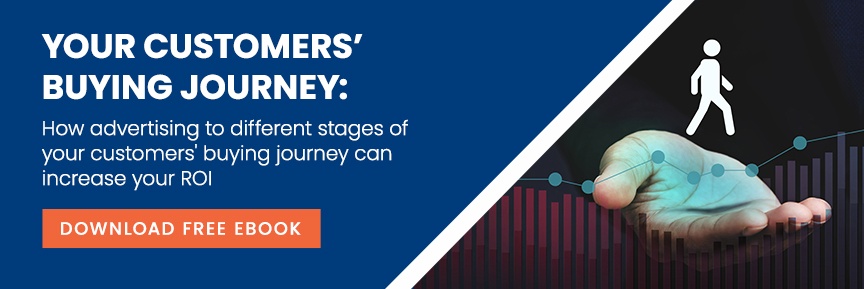
Reaching your target audience, increasing brand awareness, and building or maintaining relationships with your consumers are all achievable marketing goals. They’re also some of the biggest challenges for brands.
With so many people spending their time online, digital advertising is booming. In 2020, marketers invested an estimated $137 billion in digital advertising. Digital ad spending is also forecasted to increase rapidly in the next few years, so 2020 likely didn't see it at its peak.
Digital marketing plays a significant role in successful ad campaigns when used as part of a healthy marketing mix. Here are some digital media buying basics to get you started.
What is digital media buying?
Digital media buying refers to the process of purchasing ad space on digital platforms like websites, apps, social media, mobile, and more. This can be done through manual means or automation like programmatic, depending on your team's preference, budget, and platform.
There are three types of digital media buying you need to be familiar with:
- Paid Media — As its name suggests, paid media refers to media that you pay for. This can include pay-per-click (PPC) ads, social media ads, search engine marketing (SEM), display ads, and more.
- Earned Media — Earned media is, in a sense, the media attention that you've 'earned' but is out of your hands as far as whether it's good or bad attention. It's organic and often comes in the form of brand mentions in online interviews and articles, social media posts/shares, consumer-generated videos, and more.
- Owned Media — Owned media is the media you own and have complete control over. This could be your company's blog, website, social media page and posts, email marketing, and more.
At least two digital media buying objectives deserve consideration: First, get your message in front of the right target audience at the right time and in the correct format. Then, measuring success depending on your goals and the KPIs you set at the beginning of the campaign.
Plan for Success
Like with everything successful, there is a great plan behind its success. The following elements are essential for a successful digital media campaign.
Research your target audience
It can never be stressed enough how important it is to know your target audience before attempting to appeal to them in your advertising. There's nothing more off-putting to consumers than targeting them with irrelevant content. And let's face it, it's a waste of time for you too.
Establish goals for your campaign
Goals are the foundation of success, so you want to make sure you always have campaign goals. They ensure everyone is on the same page as far as your campaign's purpose and allows you to measure your results to improve future ventures.
The more detail, the better. Therefore, we suggest making SMART goals — meaning they are Specific, Measurable, Attainable, Relevant, and Timely.
Strategize other marketing tactics you will use to boost your digital campaign, such as radio
Radio is far from over and is bigger than ever before. When you integrate your digital campaign with radio, you can expect a 29% increase in your business's online searches. Not to mention radio ad boosts to your digital marketing efforts and a higher overall return on investment.
Pinpoint a budget
A budget ensures you don't overspend while investing in the right tactics to make your campaign successful. With a smart marketing budget that delivers results, you'll notice a significant difference in quality and success.
Evaluate your results in conjunction with your strategy
Collect and analyze your campaign results while evaluating the failures and successes of your strategy. From there, you can make adjustments for future campaigns to improve and build upon past progress.
The Digital Media Buying Process
Develop a strategy
Begin your digital media buying process with a good strategy that includes your goals, budget, KPIs, target audience, execution, and more. It's a lot like your media planning but refined and fine-tuned for delivery. It includes all the essential details of your plan to keep your team focused and organized while you're putting your plan into action.
Identify the best media outlets
Sometimes it isn't only the leading platforms that harness the ad space to make your campaign more successful. The key is to find the right mix of popular channels — as long as they're appropriate for your brand, message, and audience.
Negotiate ad buying
The online buying process is automated and doesn't involve traditional negotiations. This is where your strategic decisions and goals come into play to make sure your ads are running in the best places, at the best times, and for the best price. Focus on ways to determine your ad spend, launch your campaign, and analyze and optimize your results.
Choose the Right DSP
DSP stands for a demand-side platform and refers to software that advertisers use to buy media space from publishers. It's automated and customized to meet your specific criteria.
There are three factors that you must consider when choosing a DSP:
- Reach — DSPs are known for widening your reach, but you still want to make sure you're getting the right platform for your needs.
- User experience — Find a platform that is easy to maneuver and manage, not only to make your experience better but to ensure you can use it to its full potential.
- Data — The more data you can customize, collect and put in, the more precisely you will target the right audience.
Work With a Digital Media Buyer
Working with a digital media partner can take the overwhelming process of digital media buying and use their tools and expertise to run a successful campaign for you. In the digital age, adapting to digital marketing doesn't mean you have to go it alone!




